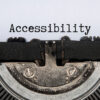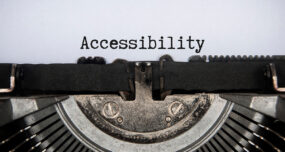Finding an accessible offer for an annual giving donor can be one of the most difficult challenges in fundraising.
Here’s why: Your annual giving donor doesn’t have all day to read about all your programs. She might have just $30 to contribute, AND she still wants to make a difference.
An accessible offer will show her the incredible difference she can make with just her $30 and a few minutes of her time.
An accessible offer is:
- Direct – It’s a clear solution to the problem presented.
- Specific – It tells her exactly what her gift will do.
- A Good Deal – It’s affordable, and the donor feels her gift will go a long way.
- Urgent – It demonstrates why her gift is needed now.
Here are some examples:
- $35 provides a night of safety and care
- $7.50 provides a meal for a college student who can’t afford it
- $55 provides a day of summer camp
- $37 provides 1 art class for a middle-schooler
An accessible offer requires the donor to understand less about your organization. Most nonprofits work under the incorrect assumption that a donor “must know all about all the things we do, and that we are good at it” before the donor can be asked to give a gift.
But offers that present ONE compelling part of what your organization does are more accessible to your $30 donor. Offers like this will increase your appeal results, and your donors will feel amazing knowing the incredible difference they can make!
PS — You might be thinking, “OK, so our offer is $7. Are we going to get a ton of $7 gifts? Aren’t we going to raise less money this way because our donors are going to give less?” Check out page 24 in this free Offers E-book to learn the answer!
McKenzie has spent most of her career at nonprofits, gathering experience across marketing, communications, annual giving, capital campaigns, public affairs, and most recently donor membership programs at Seattle Children’s Hospital. Her motivation each day is to wake up and help you make the most impact, and raise more money.









Hi McKenzie,
I’d love your take on how to apply this principle when the work a nonprofit does is not so easily translated into such tangible and quantifiable outcomes. For instance, an org helping recovering addicts figure out new ways to do daily life, or a social justice org that is tackling the social and economic root causes of hunger or homelessness. There just aren’t neat and tidy outcomes that follow a predictable time line for work like that.
Hi Catherine, this is Steven replying on McKenzie’s behalf (she’s out on vacation for a few days). We completely acknowledge that there are nonprofits whose work doesn’t translate into neat and tidy outcomes. That said, it’s still possible to do what McKenzie is suggesting. Let me spin up a coupe examples for the types of organizations you use as examples. For an org helping recovering addicts, they could use “$X for the first counseling session for an addict who wants to recover’ or ‘$Y for the book and workbook a person struggling with addition needs for their recovery. Going even deeper, the org could say, ‘We’ve figured out that the average cost for a person to successfully manage their addiction is $Z’ (and the org would find that number by dividing the total number of people they help in a year who are able to successfully manage their addiction by the total annual program costs). For a social justice org tackling the root causes of hunger or homelessness, they could say, ‘It costs just $X to eliminate the root causes of hunger for one family.’ Or they could say, ‘the way to eliminate the root causes of homelessness is to pass a piece of legislation, and your gift of $Y will do towards our lobbying and public policy efforts.’ All of these are possible, but they require thinking differently about ‘packaging’ what an organization does in order to make their work more accessible. There may not be ‘predictable timelines’ for some organizations’ type of work, but there are absolutely identifiable steps along the way that donors love to fund. I hope this helps!